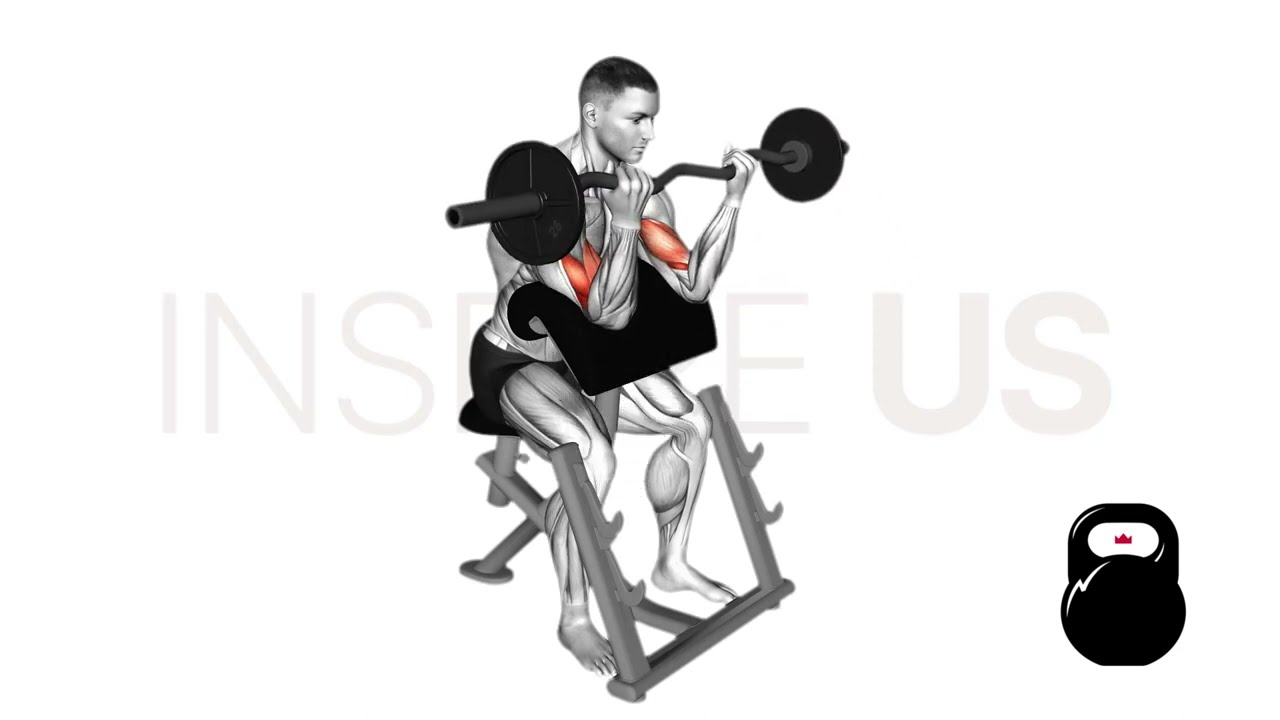Preacher Curls: Benefits, Muscles Worked, and More
Though the traditional bicep curl has cemented itself as the most popular biceps exercise, the often-underlooked preacher curl may just supercede its more common brother in terms of effectiveness.
But before you go adding this particular curl exercise to your workout, it’s important to go in-depth on the more important aspects of it as a training tool.
The preacher curl is a variation of the standard bicep curl that makes use of a preacher bench so as to maximize biceps recruitment and minimize the chance of the lifter “cheating” during the repetition.
What are Preacher Curls?
Preacher curls are a free weight isolation exercise often performed for the purposes of improving biceps brachii mass and strength.
Due to the position in which they place the arms, preacher curls will usually involve a distinctly lower amount of weight than other curl variations - though they are no less intense.

Due to their versatility and relative simplicity, preacher curls may be found in nearly every type of resistance training program, though they are most favored by bodybuilders due to the highly targeted biceps training volume that is made possible.
Who Should Perform Preacher Curls?
Preacher curls are accessible to lifters of all levels, and are even more appropriate for novices than conventional bicep curls due to the reduced risk of swinging or “cheating.”
Equipment Needed to Preacher Curl
Preacher curls will obviously require a preacher bench alongside a dumbbell, kettlebell, E-Z curl bar or any other free weight implement with which the lifter can target their biceps.
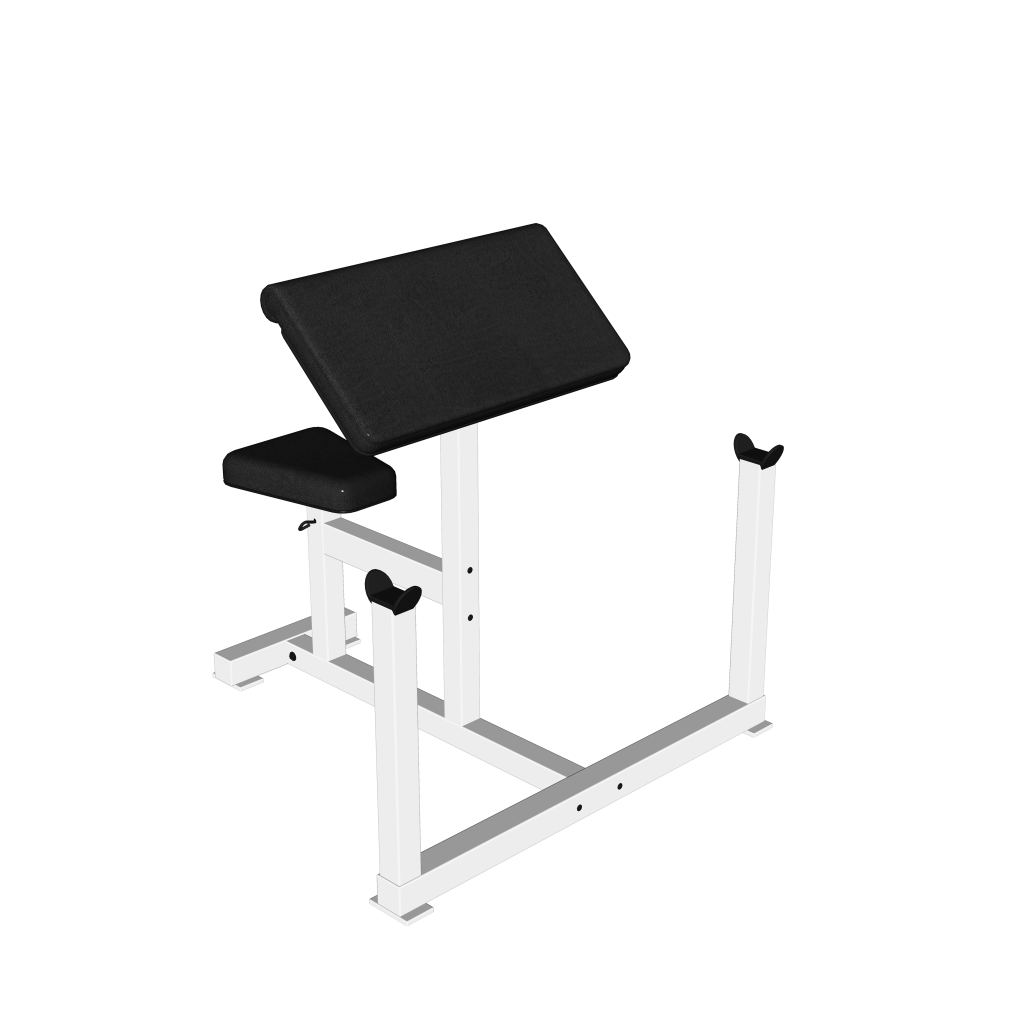
How to Do a Preacher Curl
To perform a repetition of the preacher curl, the exerciser will sit behind a preacher bench with the weight gripped before the padded slant, with an underhand grip and armpits in-contact with the bench.
Then, ensuring that the body is firmly planted, the exerciser will bend their elbows slightly as they squeeze their biceps, drawing the weight upwards until it is parallel with their shoulders.
Holding this position for a count, they will then reverse the motion in a slow and controlled manner, thereby completing the repetition.
The main form cue to maintain throughout the exercise is to keep the upper arms (the triceps, specifically) touching the bench throughout each repetition, thereby maximizing the amount of resistance placed on the biceps.
What Muscles are Worked by Preacher Curls?
Preacher curls are the very definition of an isolation exercise, as they will only recruit the biceps brachii as primary mover muscles.
In particular, preacher curls will train the inner head of the bicep somewhat more than the outer head, making it excellent for bodybuilders with a weak double-front-bicep pose.
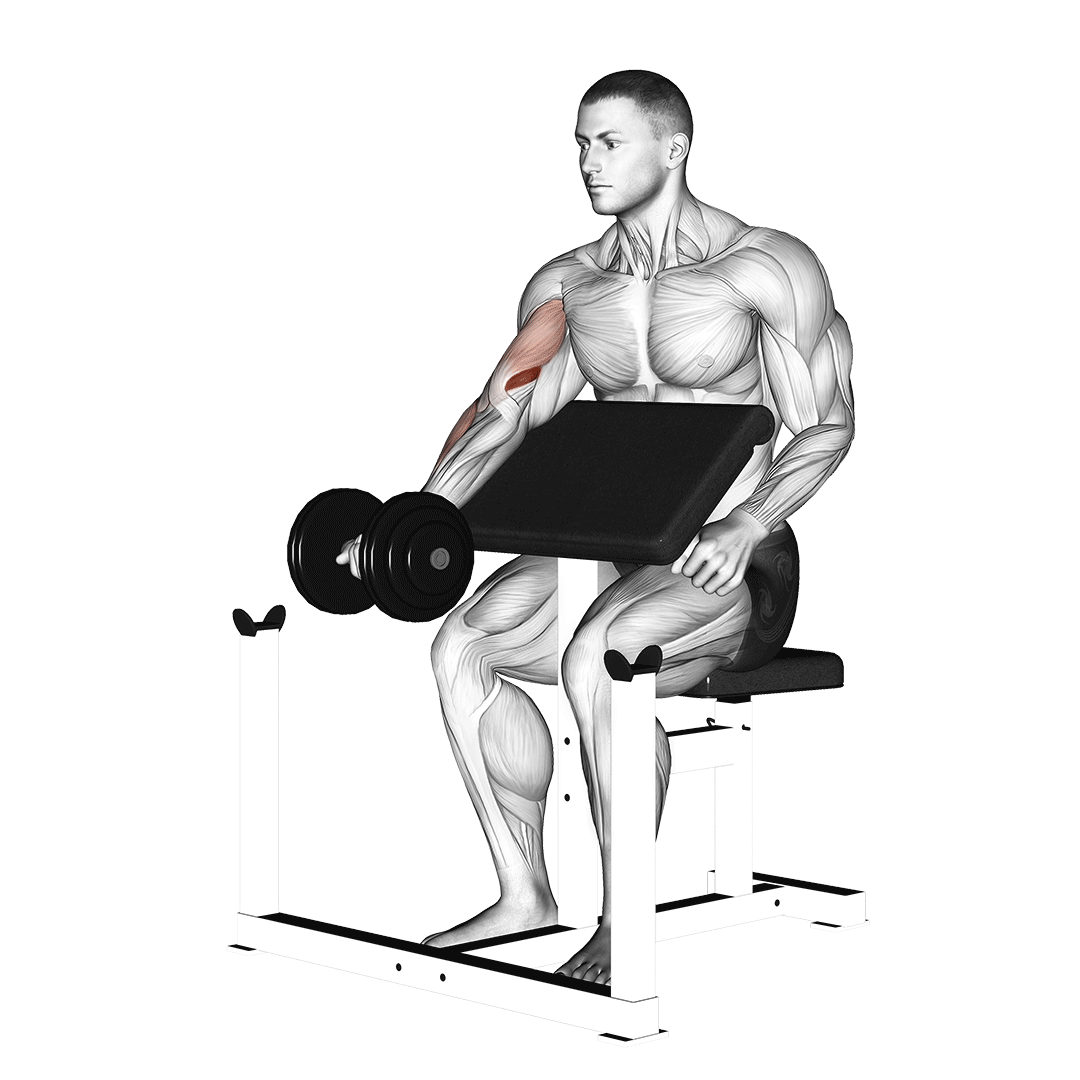
Other muscle groups that may be utilized in a minor stabilizing capacity are the forearm flexors and the brachialis - both of which will support the biceps as they are contracted.
What are the Benefits of Preacher Curls?
Though the preacher curl is less popular than other curl variations, it is nonetheless very effective at what it does; direct and straight-up bicep training, no accessory muscle recruitment or complex machinery needed.
This, of course, comes with quite a number of benefits that are difficult to replicate without the preacher curl itself - the majority of which revolve around greater development and control of the biceps.
Full Bicep Range of Motion
A frequently encountered mistake is lifters failing to fully utilize the range of motion of the biceps.
This can lead to issues like sticking points, poor stability within a certain range or simply sub-optimal training response.
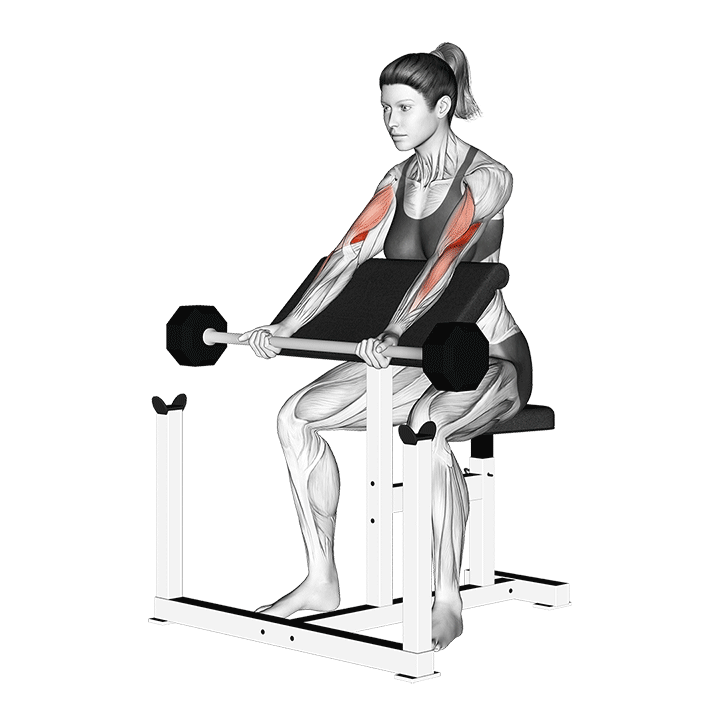
Fortunately, the preacher curl entirely negates this risk by forcing the arms into a position where the biceps are forced to fully contract.
So long as the lifter does not shorten the repetition and ensures that the arms move from full extension to shoulder elevation, the biceps will be worked through their full range of motion.
One of the Best Bicep Isolation exercises
The preacher curl may arguably be one of the best bicep isolation exercises possible, as it will solely train the biceps without any significant involvement from other muscle groups.
This idea is further supported by the lengthy time under tension, full range of motion utilization and positioning of the exercise - all of which lead to comparatively greater development of the biceps.
Reduced Risk of Cheating
Many novice lifters will move their upper arms, generate momentum with the torso or otherwise “cheat” their conventional bicep curl repetitions, causing the biceps to be trained to a lesser degree and thereby slowing down the lifter’s development.
Whether subconsciously or not, the preacher curl is far harder to cheat. So long as the upper arm remains in-contact with the slanted pad, it is unlikely that any momentum or swinging can occur.
Improved Mind-Muscle Connection
Strength does not lie entirely within a muscle, as it will still require the nervous system to initiate contraction prior to outputting any amount of force. The greater the connection between the CNS and the muscle, the faster and more efficient the strength output.
One of the best ways of reinforcing this connection is through targeted and focused time under tension, where the lifter will focus on a single muscle group as it is being trained.
In this respect, there are few exercises as effective as the preacher curl, as its sole muscular recruitment pattern and long range of motion create the perfect training for mind-muscle reinforcement.
Common Mistakes of Preacher Curls
Though the form of the preacher curl is relatively simple, there are several mistakes that unfamiliar lifters will often make - many of which can sabotage the growth of their biceps, or even lead to injuries in more extreme cases.
Poor Wrist Neutrality
Lifters may occasionally complain of wrist pain when performing preacher curls, especially when doing so with a barbell.
This discomfort is caused by failing to maintain a neutral wrist position, leading to the tendons and bones of the hands being pulled out of a stable position relative to the forearm.

To correct this issue, the lifter should strive to keep the wrist in-line and parallel to the rest of the forearm as much as possible.
Some modification of grip and stance may be needed to do so, depending on bodily proportions and what equipment is used.
Using Too Much Weight
The preacher curl does not need to be performed with the same amount of weight as a conventional bicep curl - in fact, doing so can put the lifter at risk of injuries like bicep tears and elbow tendonitis.
When performing a set of preacher curl repetitions, it is best to aim for an amount of weight that allows the lifter to complete the set with 1-2 repetitions left “in the tank”, avoiding total failure but nonetheless maintaining some level of intensity.
Shortened Range of Motion
As was touched upon earlier in this article, lifters may unintentionally sabotage the development of their biceps by shortening the range of motion of their curl exercises.
For the preacher curl, this means bringing the weight from the arms at full extension all the way to the top of the exercise at shoulder elevation.
A range of motion longer or shorter than this can lead to injuries or poor stimulation of the biceps, as well as negate many of the benefits associated with the exercise.
Performing Repetitions Too Quickly
Whether it be by failing to pause at the top of the repetition or simply performing the repetition with too much momentum, either case can reduce the length of time under tension with which the biceps are targeted.
While it is up for debate as to whether this will affect hypertrophy, it will undoubtedly reduce the quality of the repetitions and lead to less strength development occurring.
Each repetition of the preacher curl should be performed slowly and with careful control, allowing the bicep to fully be contracted through its entire range of motion without momentum or other muscle groups interrupting the tension.
Preacher Curl Variations
In case the lifter’s training goals are somewhat more specific than simply developing their biceps - or if they do not have access to the right equipment - there are several variations of the preacher curl that may be used instead.
Close-Grip Preacher Curls
For lifters seeking a way to target the outer head of their biceps better, performing close-grip preacher curls with an E-Z curl bar or straight barbell can shift much of the resistance to the longer portion of the biceps.
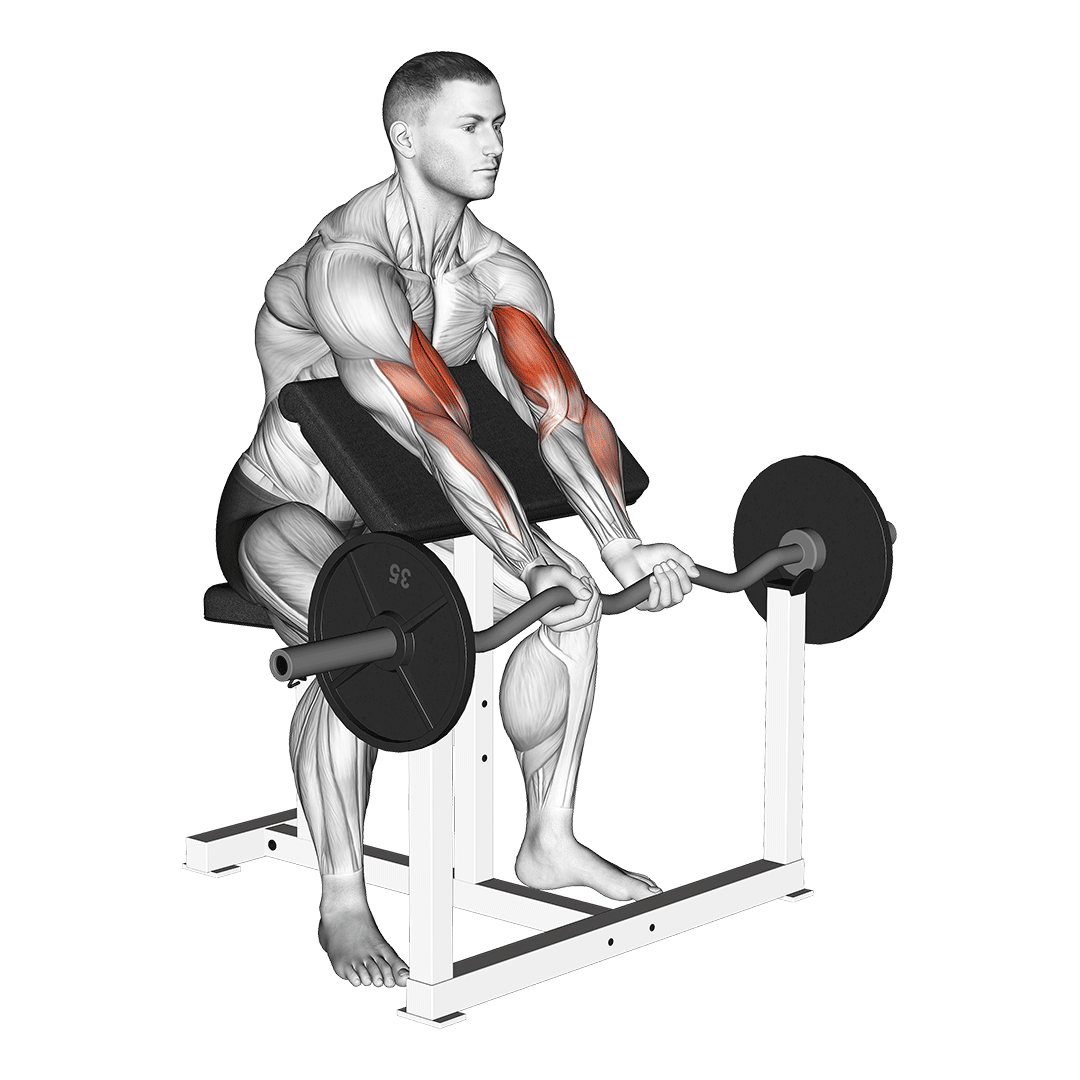
To do so, the lifter simply needs to place their elbows somewhat wider apart, and angle their forearms so the wrists are closer together as they grip the weights.
Alternating Preacher Curls
For an even greater mind-muscle connection reinforcement, performing the preacher curl in a unilateral fashion with one side of the body working independently of the other is a good start.
This can be taken even further by doing so in an alternating fashion, where one arm is worked at a time, allowing for the greatest amount of focus to be placed on each individual bicep and thereby creating repetitions of far greater quality.
Note that this obviously will require two separate weights, such as kettlebells or dumbbells - and is not possible with a barbell.
Preacher Curl Machine
For lifters seeking the benefits of resistance machines, a specially purposed piece of equipment known as the preacher curl machine may be used instead of free weight preacher curls.
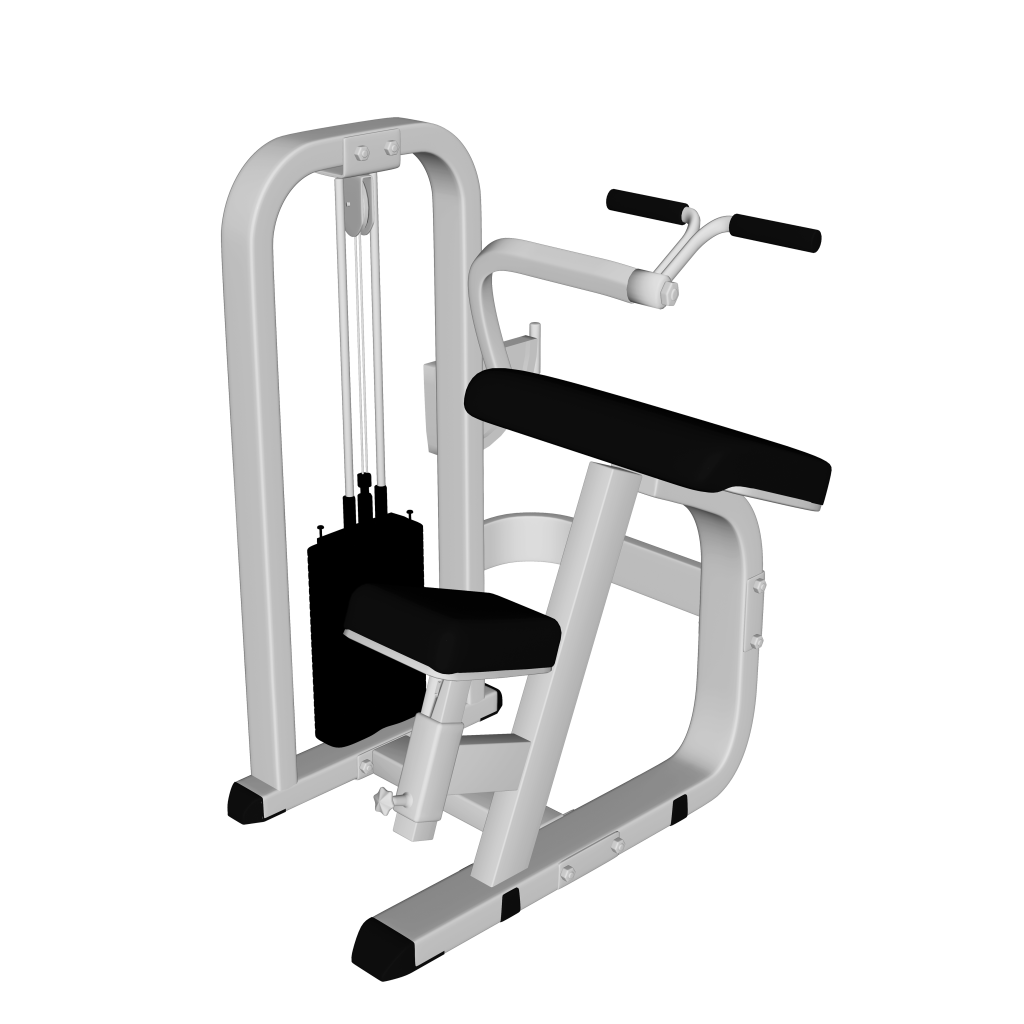
This machine acts much like an ordinary preacher bench, only with the source of resistance built in and the time under tension significantly lengthened with each set.
Some may even feature interchangeable handles and adjustable angles so as to create a more comfortable exercise for the lifter.
Incline Bench Preacher Curl (For Lifters Without a Preacher Bench)
In the case of a gym not having a dedicated preacher bench with which to perform preacher curls, it is possible to perform single-arm dumbbell curls with the use of an incline bench, so long as the lifter modifies their starting stance as needed.
To do so, the exerciser will lean one of their upper arms atop an incline bench set at a relatively high angle, kettlebell or dumbbell gripped in their hand.
They may then perform the exercise as usual.
Frequently Asked Questions (FAQ)
What is the Preacher Curl Good for?
The preacher curl is an excellent tool for building the biceps brachii, developing the size and strength output of the muscle without involving other nearby muscles as well.
This places the preacher curl in the unique position of being compatible with nearly every workout configuration or training goal, a benefit it shares with only a few other bicep curl variations.
Is the Preacher Curl the Same as Bicep Curls?
No - the preacher curl and the bicep curl are two separate exercises, despite their similarity in mechanics and muscle recruitment.
The bicep curl is most often performed from a standing position with a somewhat shorter range of motion and less intense recruitment of the biceps brachii, whereas the preacher curl is performed seated and involves a greater intensity and wider range of motion for the biceps.
Both exercises have their own separate purpose and are perfectly effective biceps training tools in their own right.
Are Preacher Curls Better Than Bicep Curls?
Preacher curls are considered to be "better" than bicep curls in the context of time under tension and bicep muscle recruitment - though this does not necessarily mean that bicep curls are entirely inferior to preacher curls.
Each exercise has its own place in resistance training, with the preacher curl being better for slow and focused repetitions, while the conventional bicep curl is better for total training volume and lifting more weight.
In Conclusion
A good starting set for preacher curls is 2-3 sets of 10-12 repetitions each, optimally with a low amount of weight until you become comfortable with the exercise.
And just to reiterate; remember to perform your preacher curl repetitions slowly and with full focus on contracting your biceps as much as possible - doing so will help maximize the many benefits of this classic bodybuilding exercise.
References
1. Oliveira LF, Matta TT, Alves DS, Garcia MA, Vieira TM. Effect of the shoulder position on the biceps brachii emg in different dumbbell curls. J Sports Sci Med. 2009 Mar 1;8(1):24-9. PMID: 24150552; PMCID: PMC3737788.

